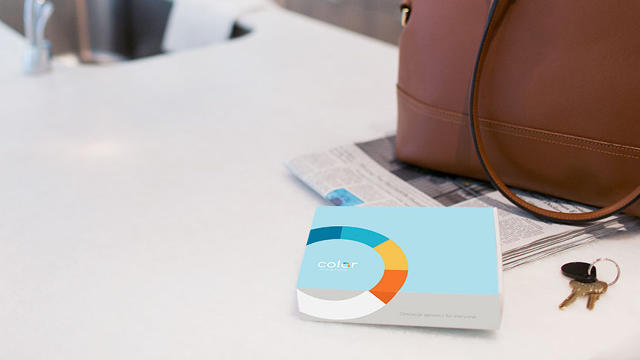Ex-Googlers’ New Breast most cancers Gene test Cuts the cost to women
coloration Genomics, founded by ex-Googlers, is an at-house check for BRCA1 and BRCA2 mutations.
April 21, 2015
closing month, the movie star Angelina Jolie Pitt had her ovaries eliminated—a response to finding out that she has a broken BRCA1 gene, which indicated that her possibilities of contracting breast or ovarian cancer in her lifetime had been round 80% and 50%, respectively. it can be the same motive she had a controversial preventative double mastectomy in 2013. Her moves spawned a national conversation about privilege and get right of entry to to information about one’s own genes. exams for BRCA1 and BRCA2 in most cases cost as much as $four,000, and insurance corporations have strict criteria with regards to covering these checks, disqualifying many women who do not need a domestic history of most cancers at a young age or don’t meet different requirements—including, in some circumstances, a private historical past with most cancers themselves.
color Genomics, a new company based by way of ex-Googlers Othman Laraki and Elad Gil, along with pathologist Taylor Sittler and biologist Nish Bhat, hopes to make this kind of genetic checking out more inexpensive. Their company’s shade check, out nowadays, is a mail-order, at-home saliva take a look at that prices $249 and checks 19 genes related to breast and ovarian cancer, together with BRCA1 and BRCA2. Mutations in those genes can point out a possibility for breast and ovarian most cancers again and again greater than the nationwide moderate (of their lifetimes, 12% of american women will strengthen breast most cancers and 1.three % of yank women will enhance ovarian most cancers). a lot of these mutations also put ladies at risk for most cancers at a a lot younger age. Early detection greatly will increase 5-12 months survival rates, from 25% for late-stage breast cancer to 98% for early-stage breast most cancers. If a lady knows her chance, she will pursue a spread of options—including shut monitoring or invasive prevention.

unlike the much-publicized genetic testing company 23andMe, which is at present limited by means of the FDA in its ability to market consumer genetic exams, the colour Genomics color test must be ordered by means of a health care provider. The physician can be a lady’s doctor, or a physician targeted via color Genomics to check a woman’s non-public and domestic health history and order the check for her. After a lady’s check is distributed again to color Genomics and analyzed, she is hooked up with a genetic counselor to explain and speak about the consequences with her—that session is included in the testing price.
color Genomics’ take a look at is CLIA (clinical Laboratory growth Amendments)-certified, as are exams from companies corresponding to Myriad and Ambry that already habits physician-ordered BRCA1 and BRCA2 exams. the difference for patients, says Laraki, shouldn’t be only the convenience of the at-home saliva test, but the cost savings due to colour Genomics’ proprietary know-how, which cuts hours of labor out of the testing process.
“In some ways this has turn out to be basically a tool downside, whereas earlier than it used to be the biology that was once the big challenge,” says Laraki. “Ten years in the past, sequencing the human genome cost $20 million, now it prices a couple of thousand, but the cost drop hasn’t been translated to customary individuals.”

Laraki says that to bring down the associated fee, “we went throughout the process end to end, from receiving the sample on the lab to prognosis, and automatic every single step that earlier than concerned a variety of handbook labor by means of clinicians. to offer a concrete instance, while you see a genetic variant in anyone, you need to decide if it is a dangerous one or not. to try this, there are neatly-established guidelines that you can think of as a complicated drift chart that include many pieces of information that tend to be carried out in an awfully handbook means. So you will have very highly educated PhDs assembling that knowledge to make that choice of whether one thing is pathogenic or no longer. What we have achieved is created a process that makes those self same PhDs ready to try this work in a much more efficient manner.”
color Genomics additionally uses state-of-the-art robots to run large chunks of the lab process. And whereas that requires a lot of up-entrance price, “it makes the process more dependable,” says Laraki, “which interprets to decrease prices at the end of the day.”
in addition, shade Genomics would not work with insurance corporations in any respect—all exams are paid for via sufferers out of pocket. Laraki says that doing away with the work required for insurance coverage processing creates huge administrative savings that may be handed onto the patient. for ladies who can not have enough money the test, color Genomics has launched the each woman program, so as to partner with analysis hospitals and neighborhood clinics to supply free trying out. in addition, women buying a test for themselves may choose to make a donation to this system.
All 4 of the corporate’s founders have a combined heritage in genetics and device. the color test used to be developed with researchers from Stanford, usa, and MIT, and the company is at the moment working with genetics specialists at institutions including U Penn, united states of america, and the university of Washington. The partnership comprises Mary-Claire King, who discovered the BRCA1 gene.
“we’ve long past via tons of of samples where our collaborators will ship them blinded—they comprehend the solutions and we do not,” says Laraki. “These are actually a few of their most tough and interesting circumstances. And we’ve run them via our lab and interpretations, and now we have a a hundred% hit price.”
As with many information-collecting medical improvements, the possible importance of a extensively to be had breast most cancers genetic take a look at isn’t just its effect on person check takers, but in using this mixture data in scientific research.
“individuals personal their information, it belongs to the consumers, and so they will have to be able to come to a decision how their data is used,” says Laraki, noting that individuals can opt out of any analysis use of their information. “but there is additionally a moral imperative to share findings with the research community, in open databases with combination information in anonymized type. If we uncover that a gene variant is pathogenic, we predict that it is very important that some other lab can make the most of our work.”
quick company , learn Full Story
(181)














